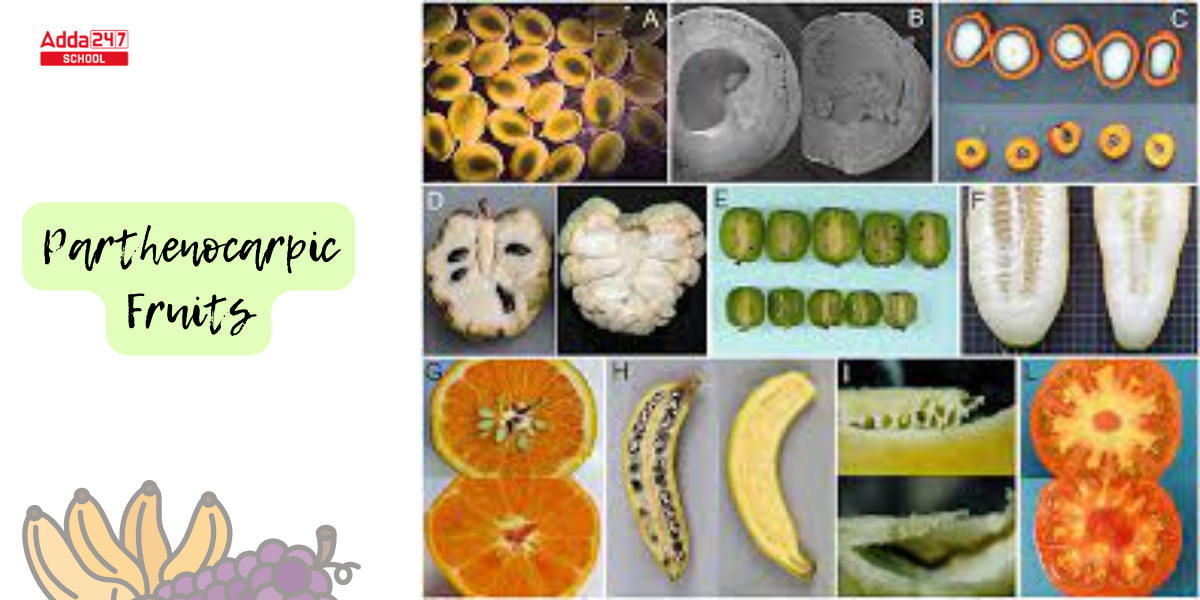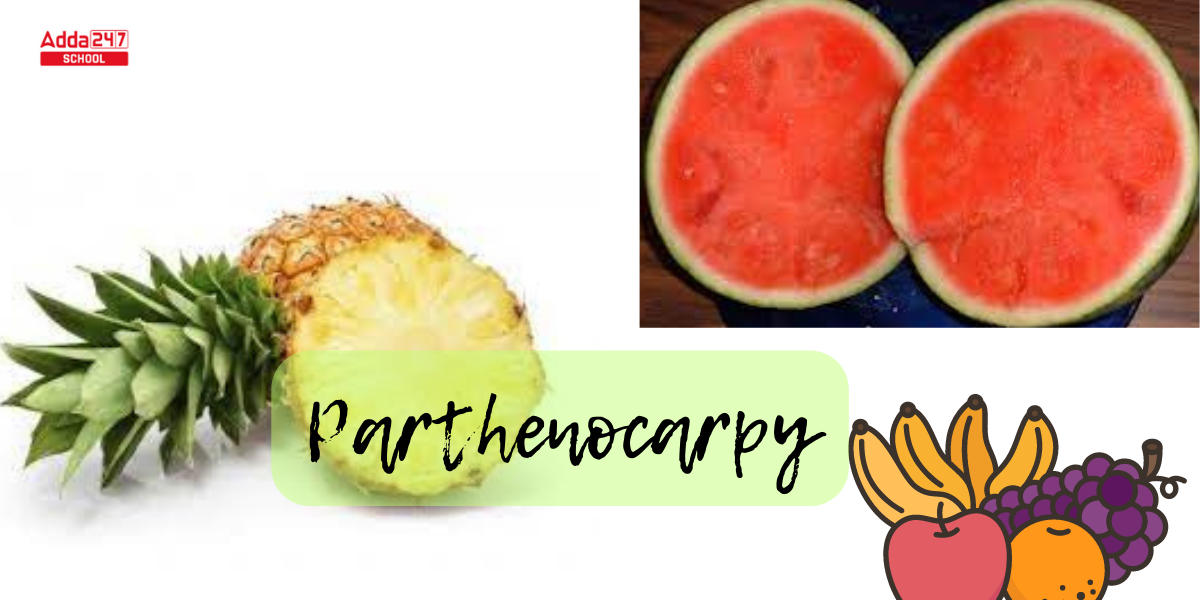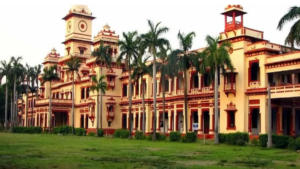Parthenocarpy: Parthenocarpy is a condition in which fruit develops without fertilization. Those are sometimes referred to as virgin or seedless fruits. A parthenocarpic fruit lacks endosperm and an embryo, and as a result, has no seeds. Parthenocarpy occurs naturally in several fruit species, including several types of pineapple, banana, cucumber, grape, orange, grapefruit, persimmon, and breadfruit. The parthenocarpic fruit is seedless but looks like a typically formed fruit. Read the entire article for more information on Parthenocarpy, how it occurs, its types, advantages, apomixis, and other related terms.
Parthenocarpy Meaning
Although the Parthenocarpy phenomenon has been noticed since antiquity, German botanist Fritz Noll first formally defined it in 1902. The Parthenocarpic fruit is seedless since the ovules were not fertilized. Numerous things, such as specific chemicals/ hormones, heat treatments, or genetic alterations, can cause parthenocarpy. Parthenocarpy is introduced together with a variety of plant hormones when plants are being cultivated, and parthenocarpic fruits contain gibberellic acid. This causes the ovary to mature without being fertilized, producing large, pulpy fruits as a result. Examples of parthenocarpic fruits include bananas, pineapples, cucumbers, watermelons, etc.
Define Parthenocarpy
Parthenocarpy is a biological phenomenon in plants where fruits develop without fertilization of ovules or the presence of viable seeds. In other words, it is the ability of certain plants to produce fruit without the need for pollination and fertilization. This can occur naturally in some plant species or can be induced artificially through various means, such as hormonal treatments or genetic modifications. Parthenocarpy often results in seedless fruits, which can be desirable for consumption because they lack the tough or bitter seeds that are present in regular fruits.
What are Parthenocarpy Fruits?
Parthenocarpy is the natural or intentionally induced development of fruit without ovule fertilization, resulting in seedless fruit. Parthenocarpy (or stenospermocarpy) happens as a natural mutation; if it affects every flower, the plant can no longer reproduce sexually but may be able to proliferate through apomixis or vegetative mechanisms.
Perthenocarpic Fruits – pineapple, banana, cucumber, grapes, watermelon, orange, grapefruit, pear, and fig. These grow without fertilization and are frequently seedless.
Seedless cucumbers exhibit vegetative parthenocarpy, while seedless watermelon exhibits stenospermocarpy.

Types of Parthenocarpy
A sort of artificial pollination with dead or changed pollen or with pollen from a different type of plant can be used to produce seedless parthenocarpic fruit in non-parthenocarpic varieties as well as in naturally parthenocarpic types outside of the growing season. Parthenocarpic development can also result via the injection, spraying, or application of synthetic growth agents in paste form. There are three main subcategories of parthenocarpy which are –
- Vegetative parthenocarpy
- Stimulative parthenocarpy
- Stenospermocarpy
Vegetative parthenocarpy
This kind of vegetative parthenocarpy occurs without pollination and the necessity for pollen grain fertilization. It prevents seeds from producing seeds. Chemicals or environmental stressors frequently trigger the procedure to occur. Vegetative parthenocarpy does not require fertilization for the ovules to develop into seeds, but the resulting seed is genetically distinct from the parent plant.
Example – Pears and figs are two examples of fruits that have vegetative parthenocarpy.
Stimulative Parthenocarpy
Although there is no pollination involved in Stimulative Parthenocarpy, there is the use of a synthetic activator. The chemical may be sprayed directly onto the flowers or fruit, or it may be sprayed over the soil or other growing medium used by the plants. This can be a wasp’s ovipositor placed into a flower’s ovary or the use of plant growth regulators on unisexual flowers found inside the syconium. Syconium is a structure in the form of a flask lined with unisexual flowers.
Examples of this are seedless grapes and seedless watermelons, both of which have seeds that are dropped when they are young and firm.
Stenospermocarpy
This particular type of parthenocarpy (Stenospermocarpy) is distinct in that although fertilization occurs and the seed starts to grow, it ultimately aborts. Normal pollination and fertilisation are still needed for stenospermocarpic fruits to ensure that the fruit “sets,” or continues to grow on the plant; however, later abortion of the embryo that had started growing after fertilisation results in a nearly seedless situation. Within the fruit, a trace of a seed can be seen, indicating the location where seed development ended.
Both parents inherit the seedless characteristic, which contributes to a high supply of seedless offspring. Fruits without seeds are bred to take advantage of immature seeds before they are terminated. These largely developed seeds are taken out of the fruit and used tissue culture methods to grow into plants.
Example – Fruits like watermelons and seedless grapes exhibit this sort of parthenocarpy.
Parthenocarpy Hormones
Parthenocarpy is the practice of producing fruit without fertilizing the ovules, whether artificially or naturally. As a result, the fruits that result are seedless. Auxins, gibberellins, and cytokinin are a few of the specific plant hormones that play a role in the development of seedless fruit.
- Auxin – The primary plant hormone known as auxin supports the growth and arrangement of leaves by regulating meristem differentiation, and cell elongation in gravitropism, and phototropism.
- Gibberellin – Gibberellins promote flower and fruit development, stalk elongation, and seed germination.
- When these hormones are sprayed on the plant’s flower, which causes the flowers to induce the growth of the without-seeds fruit or parthenocarpic fruit, it has been demonstrated that this procedure is quite effective.
- These hormones are utilized in developed fruit crops where pollinating or fertilizing the flower is challenging. Tomato, fig, and other crops are only a few of the ones where parthenocarpy is preferred.
Parthenocarpy Process
Here, we’ve used without seeds watermelons as an example to explain the parthenocapy process. One kind of parthenocarpy that occurs for a variety of causes is called stenospermocarpy. Among them, one possesses three sets of chromosomes.
- Even though most organisms have an even number of chromosomes, seedless watermelons have three sets of chromosomes in each of their pollen and egg cells. These cells, referred to as triploids, do not receive an equal set of chromosomes when they develop into pollen and egg cells. This leads to the abortion of seed development since the knowledge required to create a viable cell is unavailable.
- triploid Organisms either develop spontaneously or are created when a diploid cell crosses with a tetraploid cell to create a triploid cell. Since diploid varieties cannot germinate from triploid pollen, which is poorly formed, undeveloped seeds from diploid kinds are interplanted to encourage fruit formation.
- Seed traces are visible in watermelons without seeds. It should be noted that a naturally occurring point mutation in the grape chromosome’s portion responsible for seed formation causes stenospermocarpy seedlessness in fruits.
Parthenocarpy Diagram
Check here parthenocarpy diagram which is given below for the students

Parthenocarpy Examples
Parthenocarpy is a phenomenon in plants where fruit develops without fertilization of ovules. In other words, the fruit forms without the need for pollination or the presence of seeds. Here are some examples of parthenocarpy in plants:
Banana: Most commercially available bananas are seedless due to parthenocarpy. The bananas we commonly eat are produced through the process of parthenocarpy, which results in fruits without viable seeds.
Grapes: Some varieties of grapes can also exhibit parthenocarpy. Seedless grapes are popular in many markets, and these grapes are produced without fertilization.
Cucumber: Parthenocarpic varieties of cucumbers are cultivated for their production of seedless, crisp fruits. These cucumbers develop without the need for pollination.
Tomato: Certain cultivated tomato varieties exhibit parthenocarpy, producing seedless or nearly seedless fruit. This trait is advantageous for culinary purposes as well as commercial production.
Eggplant (Aubergine): Some eggplant varieties are known to produce seedless fruit due to parthenocarpy. These seedless eggplants are often preferred for culinary uses.
Pepper: Similar to eggplants, certain pepper varieties exhibit parthenocarpy, leading to the production of seedless peppers that are often used in cooking.
Pineapple: Parthenocarpy can also occur in pineapples, where fruit develops without fertilization. However, the majority of commercially grown pineapples are propagated by planting the crown rather than using seeds or parthenocarpy.
Watermelon: Some seedless watermelon varieties are produced through parthenocarpy. These watermelons are popular for their sweet and juicy flesh.
Apple: In some cases, apples can exhibit parthenocarpy, resulting in fruit development without viable seeds. However, this phenomenon is less common in apples compared to other fruits.
It’s important to note that while parthenocarpic fruits are seedless, they are typically propagated through vegetative methods (such as cuttings or grafting) rather than by planting seeds. These examples illustrate how parthenocarpy can be beneficial for producing desirable fruit types for human consumption and agricultural purposes.
Parthenocarpy and Apomixis
Apomixis is the process by which seeds form without fertilization, whereas parthenocarpy is the process by which fruit forms without fertilization and without seeds. The process of pollination is the initial stage in the development of a fruit and seed in a naturally occurring biological flow. However, in this instance, gametes are not fertilized to create a zygote through meiosis. The process is interrupted, and apomixis is the means by which seeds are formed. It comes in two varieties:
- Sporophytic Apomixis: In this form, the diploid sporophyte undergoes apomixis.
- Gametophytic Apomixis: In this kind, the haploid gametophyte undergoes apomixis.
Differences Between Parthenocarpy and Apomixis
- Asexual reproduction occurs in both apomixis and parthenocarpy; parthenocarpy is the process by which fruits are created without fertilization, whereas apomixis is the process by which seeds are created.
- Animals and plants exhibit parthenocarpy, whereas angiosperms and gymnosperms exhibit apomixis.
- Genetically identical mother cells are produced by apomixis, while genetically identical children are produced by parthenocarpy.
Parthenogenesis
Parthenogenesis is an asexual reproductive process in which an unfertilized egg becomes a zygote through self-impregnation. As a result, many people refer to it as “virgin birth.” Plants and asexual animals both undergo parthenogenesis. In mammals, an unfertilized egg gives rise to an embryo. It is a step in the apomixis process in plants.
Difference between Parthenocarpy and Parthenogenesis
- Parthenogenesis is asexual reproduction, whereas parthenocarpy is the process of producing seedless fruit from an unfertilized ovule. This is the primary distinction between the two.
- Parthenogenesis has the advantage of producing a high number of children rapidly. Parthenogenesis has the drawback of potentially producing less healthy or strong progeny than fertilisation.
- Plants can reproduce in two separate ways: parthenocarpy and parthenogenesis. When a plant reproduces itself without fertilisation, it is said to be in parthenocarpy. Using a plant’s own pollen or self-pollination are two ways to accomplish this. The process by which a plant reproduces from an unfertilized egg is known as parthenogenesis. The process of apomixis or the use of a plant’s own pollen can accomplish this.
Significance of Parthenocarpy
A plant that possesses parthenocarpy has several advantages.
- One is that yield may rise as a result. A plant can yield more fruit than it could if it required pollination if it is capable of bearing fruit without the need for it.
- Minimises the need of chemical pesticides to stop dangerous insect attacks.
- This is healthier and easier to get the desired effects.
- It can also aid in preventing pest or disease issues, which can hinder the pollination process.









 CUET BHU Cut off 2025: Course-wise and C...
CUET BHU Cut off 2025: Course-wise and C...
 DAVV Result 2025 Out, Download Devi Ahi...
DAVV Result 2025 Out, Download Devi Ahi...
 Calicut University Timetable 2025 PDF Re...
Calicut University Timetable 2025 PDF Re...










